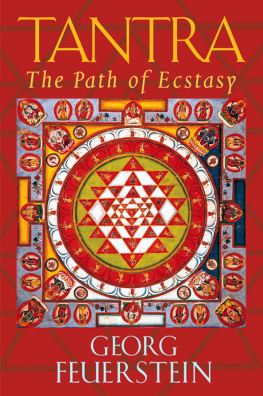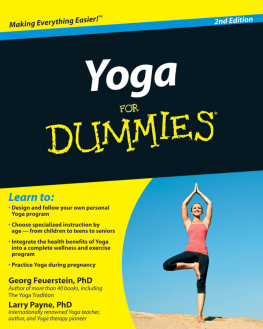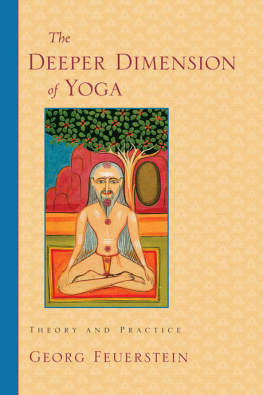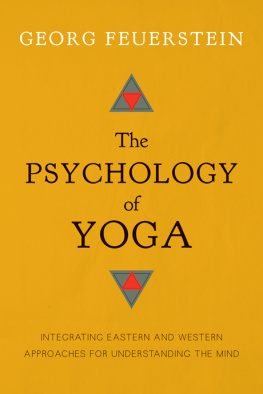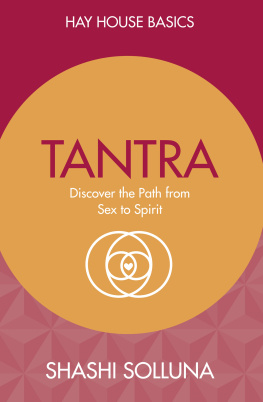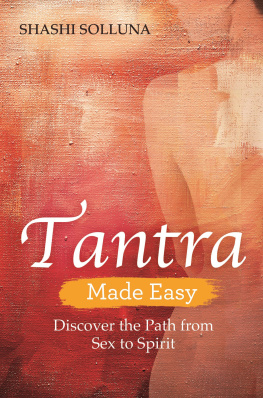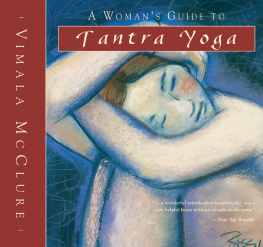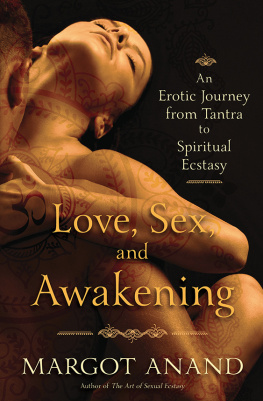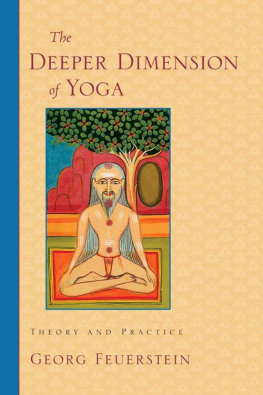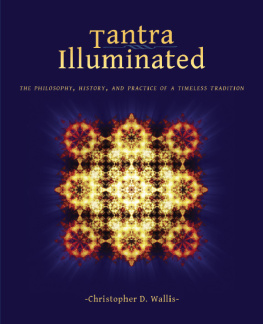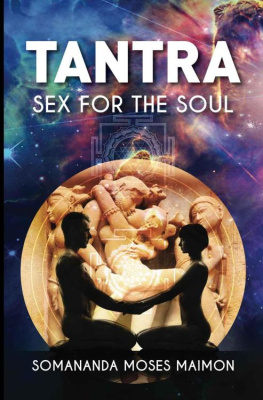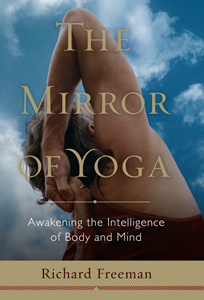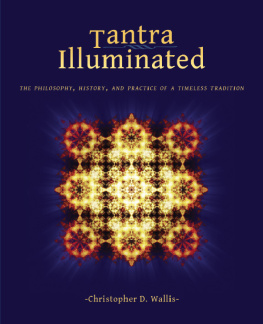A wide-ranging compendium of Hindu, Tantric, Shaivite texts almost impossible to find in one place elsewhere.... a comprehensive and provocative commentary on the basic and advanced precepts of Tantric yoga. Written with literate modesty and erudition, this book is an invaluable resource.
Publishers Weekly
Georg Feuerstein, who is arguably todays foremost Yoga researcher, has given us yet another very valuable book. Tantra: The Art of Ecstasy is the first nonacademic but sound and well-rounded introduction to the Hindu Tantric heritage since Sir John Woodroffes pioneering publications of the 1920s. It corrects many widespread misconceptions and shows Tantrism to be a complex and intriguing tradition that deserves deeper study. Recommended reading for all students of Hinduism, Yoga, and spirituality in general.
Professor Subhash Kak, Ph.D., author of India at Centurys End and coauthor of In Search of the Cradle of Civilization
ABOUT THE BOOK
Tantraoften associated with Kundalini Yogais a fundamental dimension of Hinduism, emphasizing the cultivation of divine power (shakti) as a path to infinite bliss. Tantra has been widely misunderstood in the West, however, where its practices are often confused with eroticism and licentious morality. Tantra: The Path of Ecstasy dispels many common misconceptions, providing an accessible introduction to the history, philosophy, and practice of this extraordinary spiritual tradition.
The Tantric teachings are geared toward the attainment of enlightenment as well as spiritual power and are present not only in Hinduism but also Jainism and Vajrayana Buddhism. In this book, Georg Feuerstein offers readers a clear understanding of authentic Tantra, as well as appropriate guidance for spiritual practice and the attainment of higher consciousness.
GEORG FEUERSTEIN, Ph.D., is internationally respected for his work on Yoga and is the author of over fifty books. He has designed and taught several distance-learning courses on Yoga philosophy for Traditional Yoga Studies. For more information, go to www.traditionalyogastudies.com.
Sign up to learn more about our books and receive special offers from Shambhala Publications.

Or visit us online to sign up at shambhala.com/eshambhala.

Shambhala Publications, Inc.
Horticultural Hall
300 Massachusetts Avenue
Boston, Massachusetts 02115
www.shambhala.com
1998 by Georg Feuerstein
The author thanks Princeton University Press for permission to quote from Religions of India in Practice, D. S. Lopez, Jr., ed., copyright 1995 by Princeton University Press.
Cover art: a Shri yantra, Nepal, seventeenth century. From Tantra: The Indian Cult of Ecstasy, by Philip Rawson, published by Thames and Hudson, Inc., New York. Photograph by John Webb. Reproduced courtesy of Thames and Hudson.
All rights reserved. No part of this book may be reproduced in any form or by any means, electronic or mechanical, including photocopying, recording, or by any information storage and retrieval system, without permission in writing from the publisher.
Library of Congress Cataloging-in-Publication Data
Feuerstein, Georg.
Tantra: the path of ecstasy: an introduction to Hindu tantrism / by Georg Feuerstein.
p. cm.
Includes bibliographical references and index.
eISBN 978-0-8348-2545-1
ISBN 978-1-57062-304-2 (pbk.)
I. Tantrism. I. Title.
| BL1283.84.F47 1998 | 97-29983 |
| 294.5514dc21 | CIP |
This book contains many Sanskrit diacritics and special characters. If you encounter difficulty displaying these characters, please set your e-reader device to publisher defaults (if available) or to an alternate font.

I worship in my heart the Goddess
whose body is awash with ambrosia,
beautiful like lightning, who, going from her abode
to Shivas royal palace, opens the lotuses
of the lovely axial channel (sushumn).
Bhairav-Stotra (12)
Tantra has become a household word in certain circles in the West. But, as is often the case with household words, popularity does not necessarily imply understanding. Frequently we hear words like consciousness, holistic, creativity, or imagination, but how many people could give an intelligent explanation of any of these? Similarly, Tantra has captured the fascination of a good many Westerners, but few of them actually know what it stands for, including some of those who profess to practice, teach, or write about it.
Tantra, or Tantrism, is an exceptionally ramified and complex esoteric tradition of Indic origin. It made its appearance around 500 CE, though some of its proponents claim a far longer history. Tantralike ideas and practices can indeed be found in traditions and teachings of a much earlier era. As a full-fledged movement or cultural style extending over both Hinduism and Buddhism, however, Tantra seems to have originated around the middle of the first millennium CE. It reached maturity around 1000 CE in the philosophical school of Abhinava Gupta. It profoundly influenced the outlook and practices of many non-Tantric traditions, such as Vednta. Often practitioners of those traditions have been unaware of that influence and might even be offended at the suggestion that they engage in typically Tantric practices.
The reason for this is that within the fold of Hinduism, Tantra gradually fell into disrepute because of the radical antinomian practices of some of its adherents. During the Victorian colonization of India, puritanism drove Tantric practitioners underground. Today Tantra survives mainly in the conservative (samaya) molds of the Shr-Vidy tradition of South India and the Buddhist tradition of Tibet, though both heritages also have their more radical practitioners who understandably prefer to stay out of the public limelight. Particularly Tibetan Vajrayna has become increasingly popular in the West, and it is relatively easy to receive initiation and instruction in this form of Tantra.
From the beginning, Tantra understood itself as a new age teaching especially tailored for the needs of the kali-yuga, the era of spiritual decline that is still in progress today. According to Herbert V. Guenther, a renowned scholar of Buddhism, the Tantrasthe scriptures of Tantrismcontain a very sound and healthy view of life. I would go further and say that many facets of Tantric psychology and practice are relevant to all who seek to cultivate self-understanding and are sincerely engaged in the noble task of spiritual self-transformation.
From the outset, Tantra has straddled both Hinduism and Buddhism, and Tantra-style teachings can be found even in the Indic minority religion of Jainism. Hindu Tantra, which I will somewhat arbitrarily call Tantra Yoga to distinguish it from the Buddhist and Jaina varieties, was introduced to the Western world through the writings of Sir John Woodroffe. His English rendering of the famous Mahnirvna-Tantra was published in 1913 and was followed a few years later by his books Shakti and Shkta and The Serpent Power. At that time it was still considered odious for a scholar to study the Tantric tradition, which was deemed the most decadent manifestation of Hindu culture. Woodroffe, a high-court judge in Calcutta, broke all the rules when he put on Indian garb and sat at the feet of Hindu pundits well versed in Tantra. As he once said:
Next page
